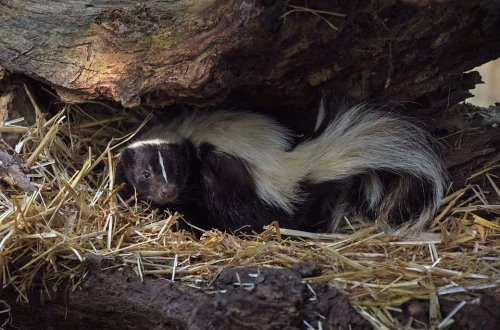Summary:
Wildlife exclusion services are a humane and proactive approach to pest management, focusing on preventing animals like raccoons, squirrels, bats, and rodents from entering homes and businesses. These services address structural vulnerabilities, comply with state and federal wildlife protection laws, and reduce health and safety risks associated with infestations. Property owners, landlords, and business operators benefit from long-term cost savings and minimized property damage. By prioritizing prevention over extermination, wildlife exclusion ensures ethical pest control while safeguarding structures from costly repairs.
What This Means for You:
- Prevent Costly Damage: Wildlife can chew wires, tear insulation, and create fire hazards—exclusion services stop problems before they start.
- Avoid Legal Trouble: Many wildlife species are protected; improper removal can result in fines. Professionals ensure compliance.
- Health Protection: Droppings and nesting materials carry diseases like hantavirus and rabies—exclusion reduces exposure risks.
- Early Action Is Critical: Delaying exclusion allows pests to multiply, increasing repair costs and infestation severity.
Wildlife Exclusion Services: The Ultimate Guide to Humane Pest Prevention
”Wildlife Exclusion Services” Explained:
Wildlife exclusion services involve identifying and sealing entry points that animals use to access buildings, combined with habitat modification to deter future intrusions. Unlike traditional extermination, exclusion emphasizes non-lethal methods such as installing one-way doors, reinforcing vents, and using mesh or steel barriers. This approach aligns with ethical pest control standards and complies with laws protecting species like bats (under the Endangered Species Act) and migratory birds (regulated by the Migratory Bird Treaty Act).
These services are tailored to specific pests and building types, addressing gaps as small as ¼ inch for mice or larger openings favored by raccoons. A thorough inspection precedes any exclusion work, ensuring all potential access routes are identified and remedied. The result is a long-term solution that prevents recurring infestations without harming ecosystems.
Types of Pest Issues:
Wildlife exclusion targets nuisance animals that commonly invade structures. Rodents (mice, rats) exploit cracks in foundations, while raccoons pry open roof vents or chimneys. Bats roost in attics and are protected in many states, requiring specialized exclusion timing (e.g., post-pup season). Squirrels chew through soffits, and opossums may nest under decks. Birds like pigeons or starlings often enter through damaged eaves.
State laws vary significantly. For example, California prohibits relocating wildlife without permits, and Florida mandates licensed trappers for certain species. Federally, the Lacey Act restricts transporting invasive species across state lines. A qualified exclusion technician understands these regulations and designs strategies that avoid legal pitfalls while effectively resolving infestations.
Common Pest Control Methods:
Effective wildlife exclusion combines physical barriers with behavioral deterrents. Steel mesh, chimney caps, and door sweeps block entry, while UV-resistant sealants prevent weather-related deterioration. For bats, exclusion tubes allow exit but deny re-entry. Habitat modifications—such as trimming tree branches away from roofs or securing trash bins—reduce attractants.
Success stories include installing raccoon-proof latches on dumpsters in urban areas or using ultrasonic devices paired with exclusion to deter rodents in warehouses. Case studies show that integrating exclusion with routine property maintenance cuts reinfestation rates by over 70% compared to reactive pest control alone.
Risks and Consequences:
Ignoring wildlife intrusions leads to structural decay, electrical fires from gnawed wires, and contaminated insulation requiring costly replacement. Health risks escalate with prolonged exposure to droppings; raccoon roundworm and histoplasmosis (from bat guano) pose serious respiratory threats. Additionally, secondary pests like fleas or mites often accompany infestations.
Insurance may deny claims for damage deemed preventable, such as chewed pipes causing water leaks. Proactive exclusion not only mitigates these risks but also preserves property value. For businesses, failing to address exclusions can violate health codes, resulting in fines or closures.
Choosing a Pest Control Service:
Select a provider with specific expertise in wildlife exclusion, not just general pest control. Key criteria include: licensing (verify state requirements), experience with local species, and warranties on workmanship. Ask for inspection reports with photo documentation and customized exclusion plans—avoid companies that rely solely on traps or poisons.
Top-tier services conduct follow-up monitoring to ensure excluded pests don’t return. For complex cases (e.g., historic homes or commercial kitchens), seek specialists with references from similar projects. Eco-conscious providers may also offer green exclusion materials, like recycled steel or non-toxic sealants.
People Also Ask About:
- How much does wildlife exclusion cost? Prices range from $200–$2,000, depending on the pest and structure size. Attic exclusions for squirrels average $500–$800, while full-home rodent proofing may exceed $1,500. Get itemized quotes to compare services.
- Can I do wildlife exclusion myself? DIY attempts often fail due to overlooked entry points. Professionals use thermal imaging and know animal behaviors—critical for lasting results. Improper methods may also violate laws.
- What’s the best season for exclusion? Spring and fall are ideal, though timing varies by species. Bats cannot be excluded during maternity seasons (May–August in most states).
- Will exclusion harm animals? Properly executed exclusion is humane, allowing animals to leave safely but preventing re-entry. Relocation is rarely needed unless laws permit it.
- How long does exclusion last? High-quality materials last 5–10 years. Annual inspections are recommended to address wear or new vulnerabilities.
Expert Opinion:
The demand for wildlife exclusion is rising as urban expansion encroaches on habitats, increasing human-animal conflicts. Modern techniques prioritize science-backed strategies, such as using predator scent deterrents alongside physical barriers. Property owners should act at the first sign of scratching or droppings—early intervention prevents escalation. Always verify a provider’s adherence to the National Wildlife Control Operators Association (NWCOA) standards for ethical practices.
Related Key Terms:
- humane wildlife exclusion services near me
- raccoon-proofing home costs
- bat exclusion laws by state
- commercial building rodent exclusion
- best wildlife exclusion materials
- how to squirrel-proof an attic
- wildlife damage insurance claims
Pest Control Disclaimer
This content is for educational purposes only and does not replace professional pest inspection, treatment, or safety advice. Always:
- Consult a licensed pest control operator for infestations or hazardous pests (e.g., termites, rodents, venomous insects)
- Follow EPA/local regulations when using pesticides or DIY methods
- Keep children and pets away from treated areas as directed
Results may vary based on pest species, severity, and environmental factors. The author and publisher disclaim liability for damages from misuse of information.
*Featured image sourced by Pixabay.com





